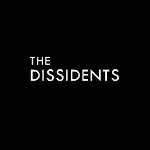In late 2024, Oxford University Press chose "brain rot" as its Word of the Year, defining it as "a deterioration in mental and intellectual capacity due to excessive consumption of valueless or unchallenging material (especially online content)." While critics have long dismissed Netflix's productions as quintessential low-quality content, I've discovered—particularly after watching Adolescence (2025)—that Netflix's distribution model might actually be our salvation from brain rot.

Netflix distinguishes itself from other streaming platforms primarily through its practice of releasing entire seasons at once, enabling "binge-watching"—consuming a complete series in one sitting. This approach stood out as unconventional in the industry, where traditional distributors favored episodic releases as their proven method. Weekly releases let them build long-term IP marketing strategies, maximize advertising impact for popular shows, and promote other shows during the gaps between episodes.
With the rise of mobile devices, today's audiences no longer need to watch shows only in front of their TV sets. People can stream content anywhere—during commutes, in parks, or even in elevators. However, while mobile devices offer convenient access to entertainment, they have also fostered attention fragmentation. As quick, emotional content with little intellectual depth is prevailing, people have stopped using brief periods of free time for substantive activities. Our lives have become unconsciously fragmented by bite-sized content. We rarely experience the joy of being fully absorbed in one thing for an entire day. Instead, we bounce between brief obsessions with different things, quickly losing interest due to an overwhelming number of alternative choices and ultimately falling into an inexplicable emptiness.
Profound life experiences require sustained focus, and likewise, deep understanding of any topic demands immersive attention. High-quality content rarely emerges from fragmented information products—not because of their format, but because of scattered attention. (Even memorable poems and short stories prove this point: their brevity doesn't diminish their depth.)
Netflix might initially adopt this distribution model for business reasons only, but my experience with their quality content over the past two years suggests it's actually a healthier way to consume media. When I decide to watch a Netflix show, I'll set aside an entire block of time avoiding interruptions except for necessities—bathroom breaks, meals, or urgent matters—much like settling in with a book at the library, fully immersed. Of course, I might abandon a show or book partway through, but for any compelling series, Netflix's model offers a rare chance for complete immersion, which is precious in our age of fragmented attention.
This model also fosters family togetherness. Though my wife and I both love shows, we don't usually enjoy our free time at the same moment. With traditional episode-by-episode releases, we'd often end up watching separately during our free time. After all, we are not each other's only viewing partners—we both have our friends. For shows where I'm only moderately invested (7/10) while she and her friends are highly enthusiastic (10/10), she can enjoy deeper discussions with them.
Netflix has faced persistent criticism of both its production and distribution methods. When Netflix and other streaming platforms like Apple TV+ simultaneously release a poorly received show, critics often single out Netflix for blame while merely criticizing the show itself on other platforms. Headlines like "Netflix: Expert at Low-Quality Content" or "Netflix Ruins Another Original" appear regardless of who's actually responsible. This double standard isn't fair. Filmmakers who have worked with Netflix tell a different story—it is a creator-friendly company that invests generously, grants creative freedom, and takes bold risks. Given Netflix's relative youth and the sheer volume of content it produces annually, its improvement in quality has been impressive. The platform's early content limitations weren't a result of its model but rather a natural part of its growth journey. Quality content requires time to develop, and Netflix has demonstrated its understanding of this nurturing process.
Furthermore, Netflix's model not only helps viewers develop a deeper understanding of series content but also empowers creators to produce more meaningful work. I don't mean to compare Netflix series directly with traditional ones, but it's worth noting that Netflix creators enjoy greater artistic freedom. Though their work still faces audience criticism, it can be evaluated as a complete work rather than in fragments. Netflix creators can focus solely on their artistic vision and target audience during production, unlike traditional creators who must react to audience feedback after each episode—sometimes even reviving dead characters due to fan demands. While artistic freedom doesn't guarantee deeper content, it is essential for creating profound work. Creators know their content best, and if they constantly reshape their vision based on fan reactions, they'll never achieve their original artistic goals.
Adolescence represents a groundbreaking milestone on television. Its four episodes, each filmed in a single continuous shot, exemplify the kind of innovative content that traditional distributors would never attempt—yet Netflix made it possible. Similarly, Murder Mindfully from last year, with its concise eight 30-minute episodes, demonstrates content that other streaming platforms might have rejected. Nevertheless, it became one of Netflix's biggest hits of the year. Though few critics are analyzing Netflix's unique content characteristics, I see an innovative creative force emerging within the platform.
What do you think, Peliplaters?
















































View replies 0